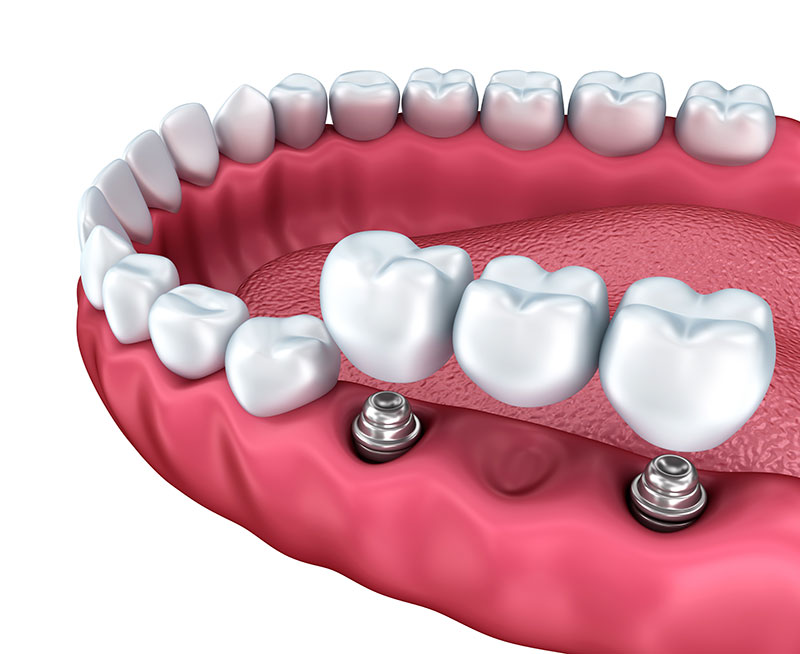
Learn All About Dental Bridges
Many people are faced with the decision about what to do after losing a tooth. The typical tooth replacement options are dental implants, partial denture or a dental bridges. While dental implants are the gold standard for replacing missing teeth, not everyone is a candidate for them. Today, we will be focusing on learning about dental bridges.
What is a dental bridge?
A dental bridge is a fixed restoration that can replace one or more missing teeth. There are two parts; the abutments and the pontic. The abutments are the teeth next to the space that will be part of the dental bridge. The pontic is the artificial tooth that will fill in the space.
Types of dental bridges:
Traditional – This is the most common type of dental bridge. It is used if there are stable teeth on either side of the missing tooth. It consists of two dental crowns on the abutment teeth with the pontic in between to fill the space. In some cases, more than one pontic may be used to replace multiple missing teeth.

Maryland – This type of bridge consists of a dental crown with “wings” on either side which are bonded to the adjacent teeth. It is usually only used to replace missing front teeth since it isn’t as strong as a traditional bridge. The limited strength is due to it only being bonded to the backs of the adjacent teeth instead of the full coverage crowns used in a conventional dental bridge.

Cantilever – Instead of two abutment teeth, this bridge only has one abutment tooth and a pontic. This type of bridge isn’t commonly used because of its instability due to it just being secured on one side.
Implant supported – Similar to a traditional dental bridge but instead of natural teeth, the abutment teeth are dental implants.
The process for a traditional dental bridge:
- The dentist numbs the area and then prepares the abutment teeth by filing them down so the dental crowns can fit over.
- Dental impressions are taken, and a mold is made of your teeth. These are sent to the lab that is creating your dental bridge.
- A temporary bridge is put into place to protect the prepared teeth while you wait for your permanent bridge.
- When the bridge is ready, you will return to have the temporary bridge removed, and the permanent one cemented into place.
How to care for your dental bridge:
It is essential to clean around and under your dental bridge daily. Plaque bacteria can cause decay on the abutment teeth, and food and bacteria caught under the pontic can irritate your tissues. Your dental professional can show you how to thread your floss under your dental bridge to keep it clean. A Waterpik or other dental tools may also be used. If properly cared for, your dental bridge should last many years.
If you have any questions about dental bridges, call us today!
